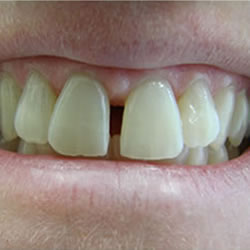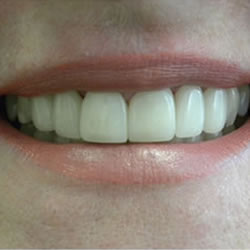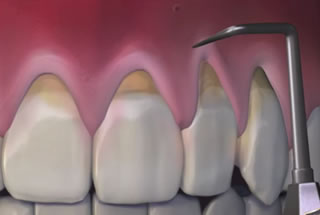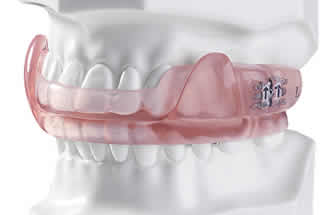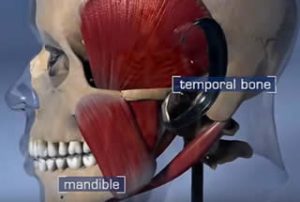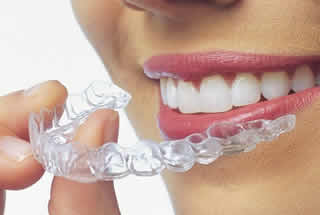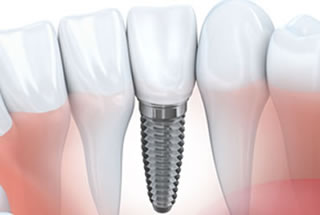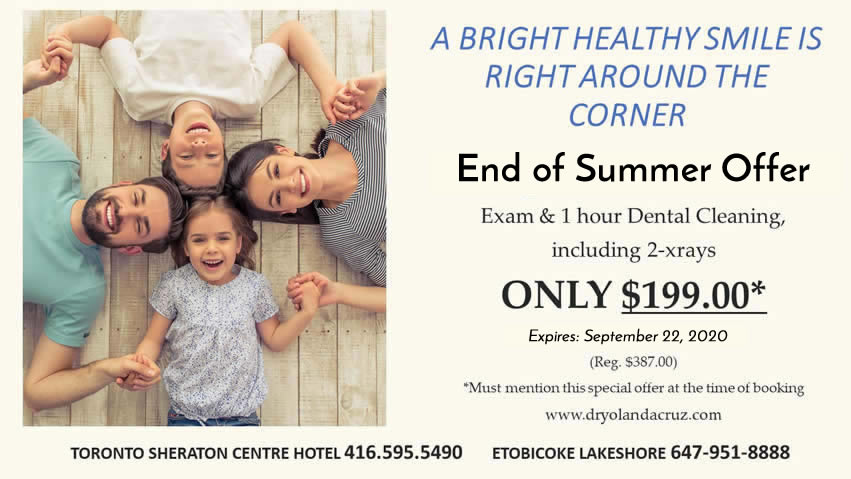There can be lots of unfamiliar terms in the world of oral health care. It’s sometimes confusing when you hear words that you don’t fully understand. The more you know, the better you can take care of yourself and your smile. If you want to get a head start on knowing the terms your dentist may use when discussing your care, here are some common terms that might be helpful to you.
Veneers
Thin shells that are attached to the front of your teeth to improve the shape, color, or size are called veneers. Usually made of porcelain, veneers are stain resistant and look very natural.
Implants
Dental implants permanently replace missing teeth. They are surgically placed in the jawbone to anchor artificial teeth, and may also be used to hold dentures or a dental bridge.
Dentures
Dentures are another solution for missing teeth. These removable replacements can be used when all of your teeth are missing, or when some of your natural teeth remain. Dentures allow you to eat and speak similar to having natural teeth.
TMJ
The temporomandibular joint (TMJ) connects your upper and lower jaws. It enables you to move your jaw up and down, sideways, and forward and back. The term TMJ is often used to refer to a disorder of that joint which causes pain, toothaches, headaches, and other symptoms.
Teeth whitening
Temporarily lightening your tooth color, typically with a bleaching agent, is called teeth whitening. Techniques include whitening toothpastes, strips, trays, or professional services at a dentist office.
Wisdom teeth
Your third set of molars and the last to erupt are called wisdom teeth. They usually appear between 17 and 25 years of age, and can cause trouble if there isn’t sufficient room for them. Some people have impacted wisdom teeth, which don’t grow in properly and usually require surgical removal.
Invisalign
Invisalign refers to clear, removable aligners that are worn to correct orthodontic problems. Each aligner is worn for a couple of weeks before changing to the next one.
Cosmetic dentistry dentist in Toronto
Have you been told that your mouth makes noise when you sleep? Do you experience jaw pain or fatigue? Have you noticed unusual wear on your teeth? Any of these symptoms may point to bruxism, a medical problem that involves grinding your teeth. You might be moving your upper and lower teeth continuously against each other, causing symptoms like those above. If you are one of the millions of people in the world affected by this problem, it’s time to learn more about it.
Causes
Some of the common causes of bruxism are stress, jaw or tooth misalignment, sleeping problems, and diet. Other causes include a competitive personality, suppressed anger or frustration, and medication side effects. Studies show that teeth grinding can be used as a coping mechanism for some people, and often they do it without even realizing it.
Effects
Bruxism can have extremely bothersome side effects, and can cause serious damage to your teeth over time. Teeth grinding often produces headaches, jaw soreness, earaches, and tooth sensitivity. Longtime grinding wears down your teeth and may cause cracks, loose teeth, and exposed roots. Additionally, grinding your teeth creates an annoying noise that family members and others may complain about, especially when it keeps them awake at night.
Treatment
First, take good care of your teeth by practicing proper hygiene and visiting your dentist regularly. Some bruxism patients are not even aware of their teeth grinding habit, so your dentist may recognize the effects before you do. Work with your dentist to identify the causes of your bruxism, and ask about treatment options. Treatments may involve stress management techniques, mouth guards, orthodontic work, or behavior therapy.
Dr. Yolanda Cruz – Cosmetic dentist in Toronto
It seems unlikely that your gums would have any correlation to breast cancer, but surprisingly the two have been linked. With statistics reflecting that about 1 in 8 women are diagnosed with breast cancer, women are on high alert about the risks and importance of self-exams and mammograms. Many women, however, are unaware that how well they care for their teeth and gums impacts their breast cancer risk.
A recent Swedish study discovered that women with gum disease may be as much as eleven times more likely to develop breast cancer. The study was one of the first of its kind that focused on the link between these two ailments. Research showed that the stage of gum disease didn’t matter; the risk for breast cancer increased whether it was early gum disease called gingivitis, advanced gum disease called periodontitis, or even so severe that tooth loss occurred.
Unlike some of the other risk factors for breast cancer, gum disease is preventable. It results from the buildup of plaque and bacteria under your gum line, causing pockets of infection. The first symptoms of gum disease are typically bleeding and swollen gums, and tenderness in the area. As gum disease worsens, you will likely experience receding gums, loose teeth, and even lost teeth.
The best ways for you to avoid gum disease, and therefore decrease your risk for breast cancer, is to practice good oral care. This includes brushing at least twice a day with fluoride toothpaste and flossing every day, and using an anti-microbial mouth rinse as well. Maintain a balanced diet, don’t use tobacco, and see your dentist for regular checkups.
Dr. Cruz is a dentist in Toronto that treats gum disease.
You may wonder how celebrities get such bright, stunning smiles. Since looking their best is a big part of their lifestyle, their smiles must be picture perfect all the time. Although sometimes they might seek expensive treatments to achieve these results, most of the time they just do the same things the rest of us can do ourselves. Let’s learn some tricks that celebrities follow that you can do to get a stunning smile of your own.
Practice good oral care
Just like you and me, celebrities perform dental hygiene tasks. That includes brushing at least twice a day with a soft toothbrush. An electric toothbrush may help because the sonic waves attack plaque and reduce gum inflammation. Use a whitening mouth rinse to reach places you may have missed, but avoid mouthwashes containing alcohol. Floss your teeth at least once every day to get rid of food and plaque between your teeth and around your gums.
Chew gum
Saliva helps break down germs in your mouth, and rinses away food debris that has been left behind. Chewing gum promotes saliva production, but make sure it is sugarless. Also look for gum containing xylitol, which has been shown to help prevent tooth decay.
Eat the right foods
Eating crunchy fruits and vegetables naturally cleanses your teeth. Strawberries are especially good because they scrub the teeth and contain malic acid, which helps break down stains. Limit foods high in citric acid, like lemons and grapefruit, because it can erode tooth enamel. Rinse your mouth well after consuming foods known to stain, like coffee and red wine.
Use whitening products
Choose whitening toothpaste to remove plaque and surface stains, and try over-the-counter whitening products like strips. If you aren’t satisfied with these results at home, ask your dentist about professional whitening methods. Techniques performed in a dental office are usually stronger and faster, providing whiter results in a shorter timeframe.
Go to the dentist
Maintain regular visits to your dentist for cleanings and examinations, so that your smile will be the best it can be.
General and family dentist in Toronto
Having a tooth extracted probably isn’t on the top of your list of fun things to do, but it can go a lot more smoothly if you know what to do and what to avoid afterwards. There are some things that will contribute to your healing, and there are some other things that can impede it. Follow these guidelines to give yourself the best experience possible.
What should I avoid after tooth extraction?
The goal after extraction is to heal as quickly and painlessly as possible, so that you’re back enjoying your life. If all goes well, you can often return to your regular activities in only a few days. Here are some things to avoid:
- Smoking or chewing tobacco
- Using a straw when drinking
- Chewing hard or crunchy foods
- Drinking hot liquids or alcohol
- Rinsing your mouth or spitting often
- Sucking hard candies
- Lying flat on your back
Sucking motion of any kind, which can loosen the blood clot or cause a dry socket. A dry socket means the bone where the extracted tooth was becomes exposed, causing pain and possibly infection.
What should I do after tooth extraction?
The first rule is to rest and take it easy. Some other guidelines for proper care include:
- Take any anti-inflammatory medicines as prescribed by your dentist.
- Change the gauze as instructed.
- Elevate your head.
- Hold an ice pack to your jaw as needed.
- Eat soft foods and drink cool beverages. Eating ice cream may make you feel better, but not popsicles because they initiate the sucking motion.
Dentist in Toronto extracting teeth.
Not everyone has a perfect smile. In fact, many people struggle with feelings of insecurity about their smile and unhappiness with how their mouth looks or functions. Cosmetic dentistry offers solutions for all sorts of mouth problems, giving you the ability to feel proud of your smile instead of embarrassed. Maybe a smile makeover is what you need!
There are a variety of procedures and techniques that dentists use to perform smile makeovers. The goal is to improve the appearance of teeth and gums, and to aid the mouth in functioning like it should. Some common procedures used in making over smiles include:
Fillings – tooth-colored fillings are used to correct holes caused by cavities and decay.
Bonding – composite resin material may be used to restore teeth from problems like chips or cracks. Teeth are cleaned and then shaped to a natural and attractive form with the bonding material.
Veneers – thin shells often made of porcelain are adhered to the surface of chipped, cracked, discolored, or misaligned teeth. They are shaped and colored to provide a very natural and appealing look.
Dentures – artificial teeth are customized for each patient and rest on the gums using dental adhesive. They are made to function and look like real teeth.
Braces – misaligned or crooked teeth may be corrected with traditional metal braces, or newer options like Invisalign clear retainers.
Teeth whitening – to reduce stains and brighten teeth, whitening methods may be used to restore smiles more than brushing alone can accomplish. There are a variety of options ranging from kits available at the drugstore to at-home kits from the dentist to professional methods performed at a dental office.
Cosmetic dentist in Toronto Canada

 E-Mail Us
E-Mail Us  416-595-5490
416-595-5490